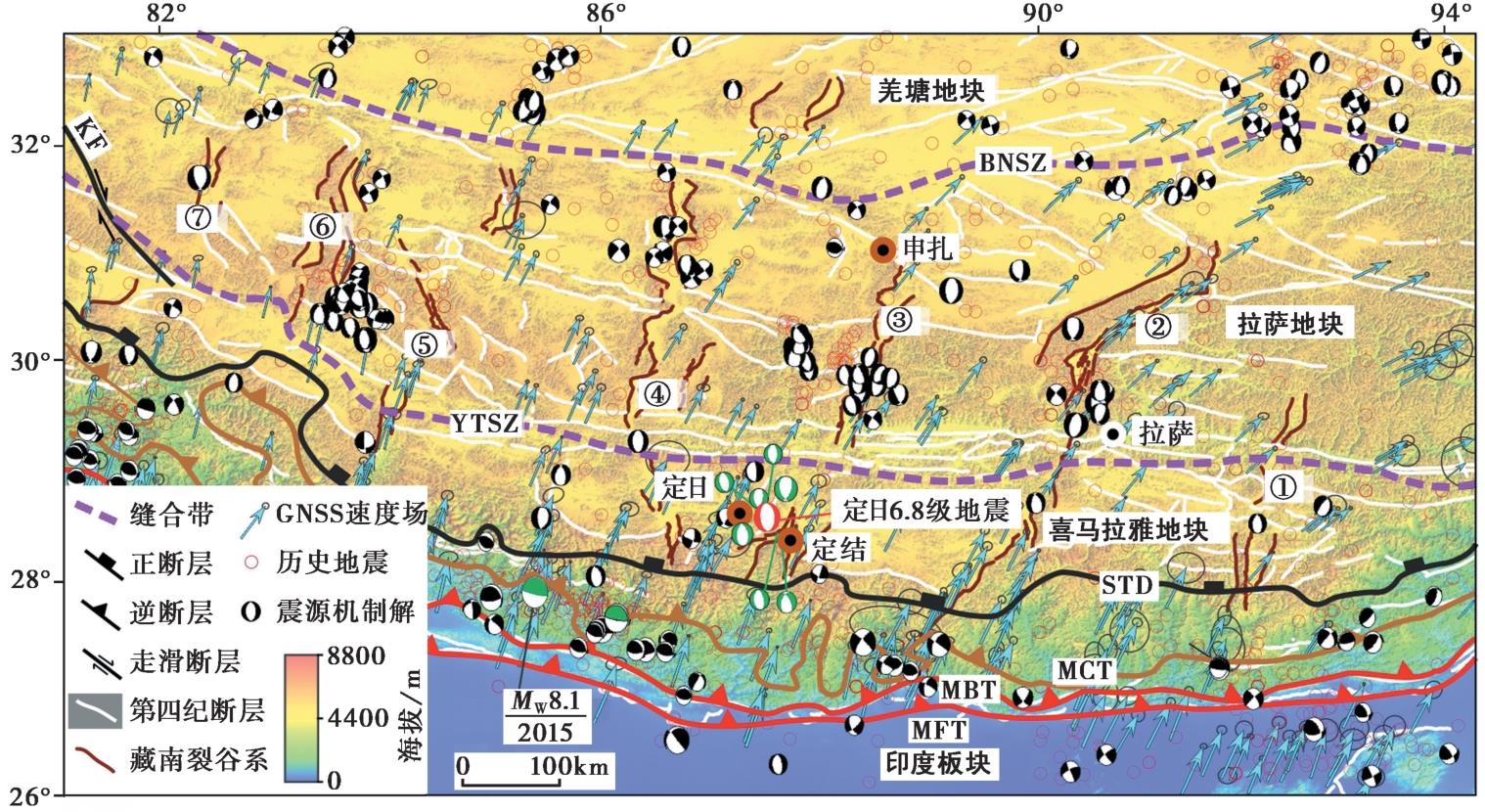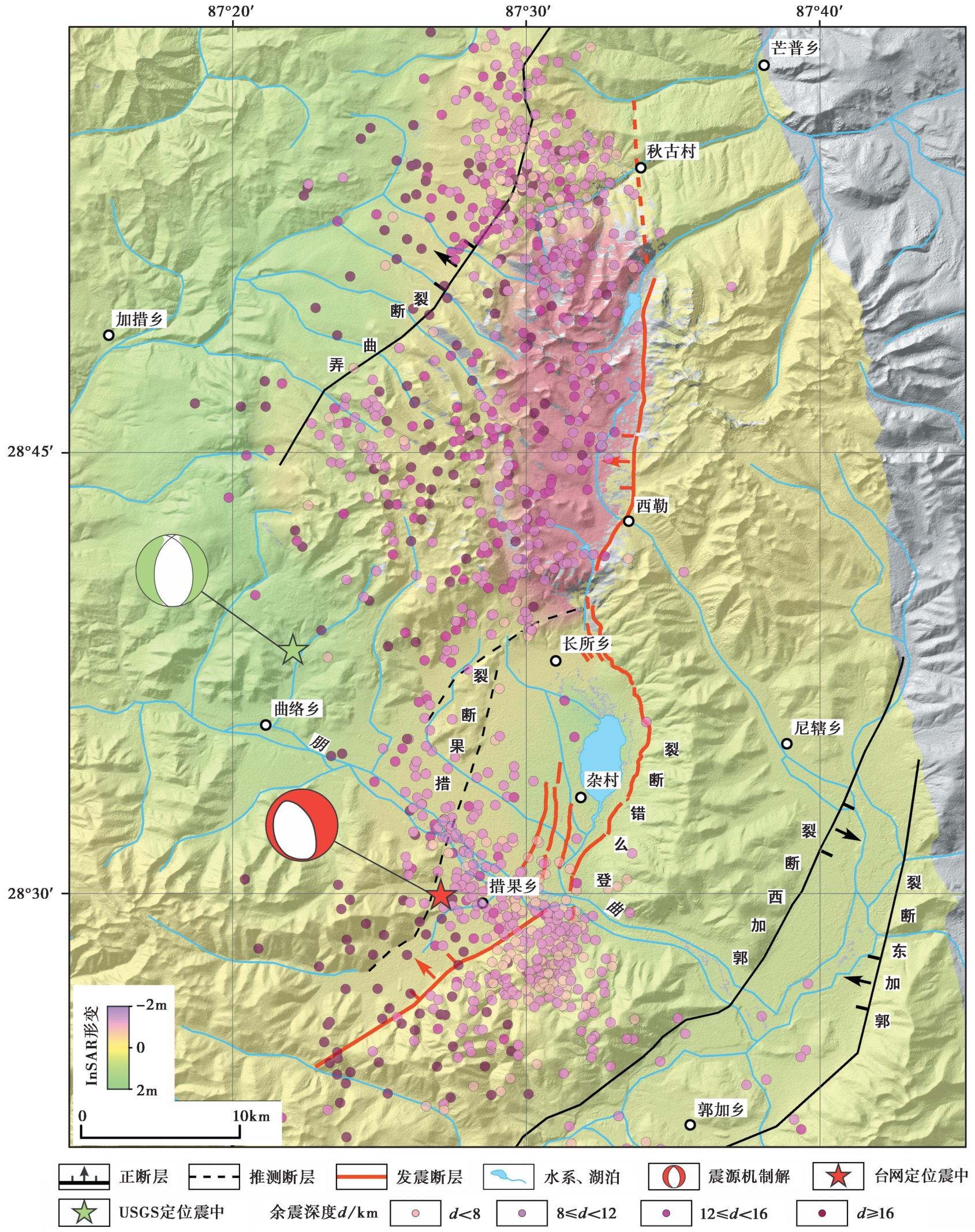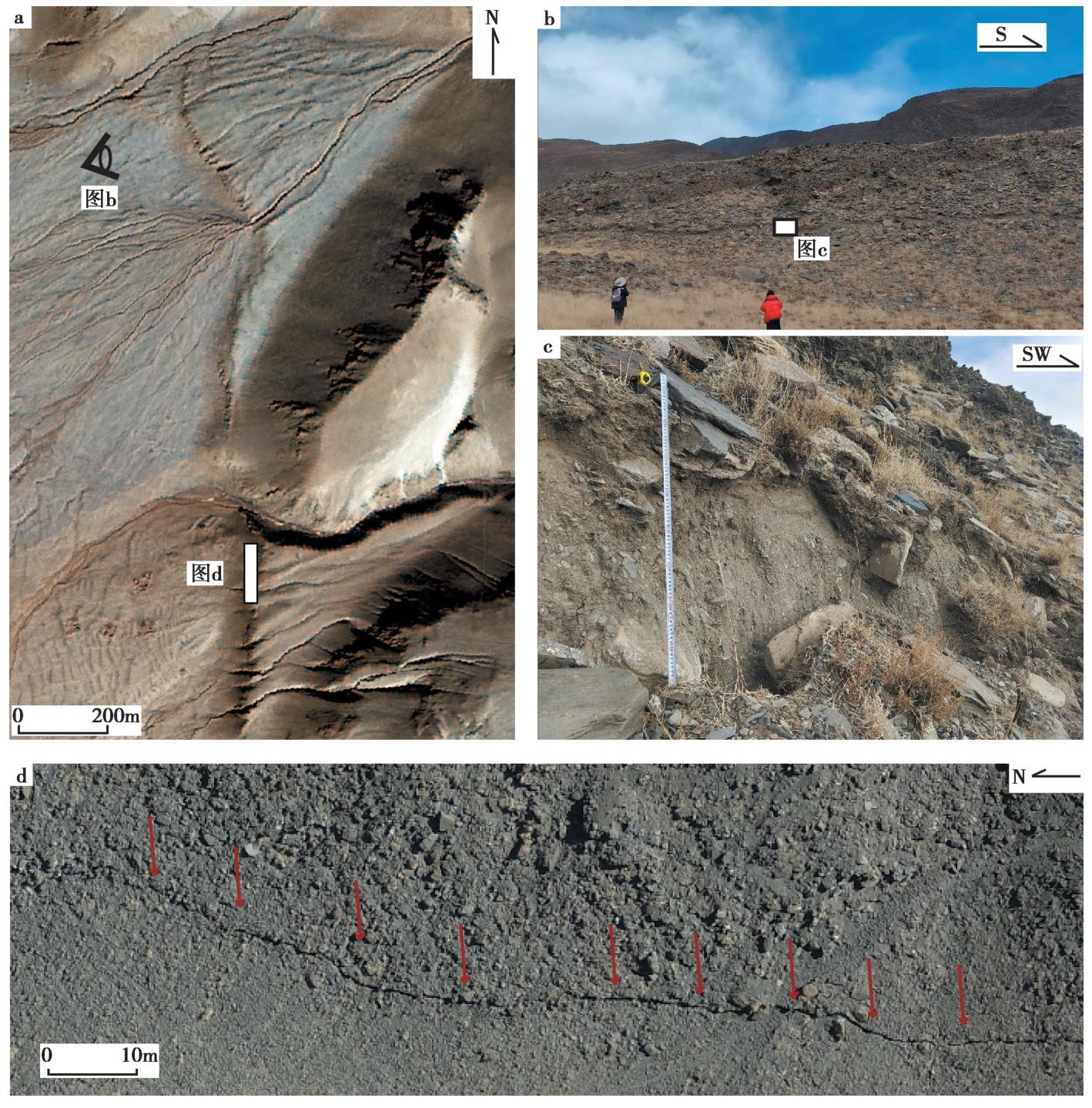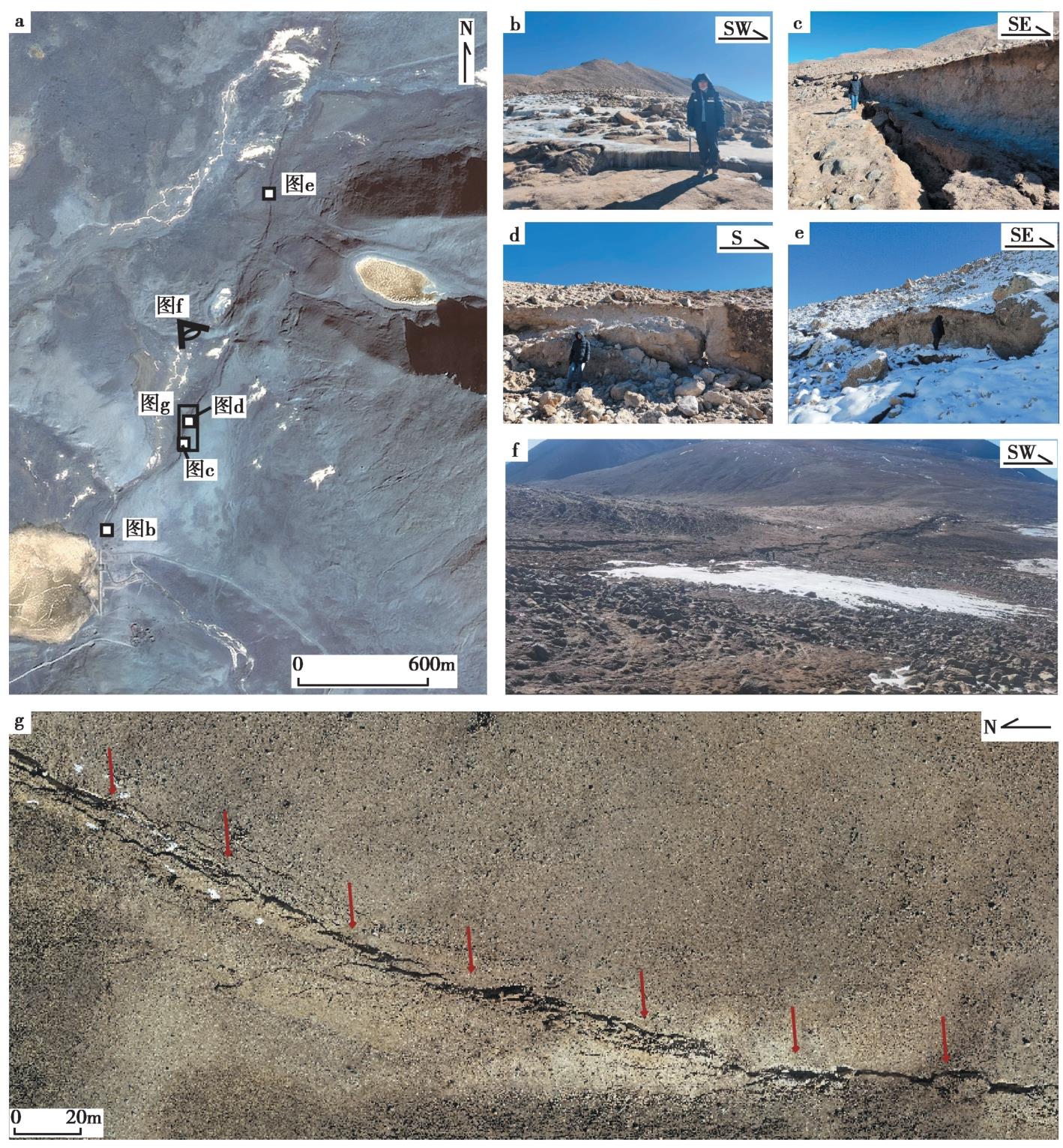地震地质 ›› 2025, Vol. 47 ›› Issue (1): 1-15.DOI: 10.3969/j.issn.0253-4967.2025.01.001
石峰1,3)( ), 梁明剑2), 罗全星1,3), 乔俊香1,3), 张达1,3), 王鑫1,3), 易文星1,3), 张佳伟1,5), 张迎峰1,4), 张会平1,5), 李涛1,4), 李安1,3),*(
), 梁明剑2), 罗全星1,3), 乔俊香1,3), 张达1,3), 王鑫1,3), 易文星1,3), 张佳伟1,5), 张迎峰1,4), 张会平1,5), 李涛1,4), 李安1,3),*( )
)
收稿日期:2025-01-22
修回日期:2025-01-24
出版日期:2025-02-20
发布日期:2025-01-27
通讯作者:
李安
作者简介:石峰, 男, 1984年生, 2014年于中国地震局地质研究所获构造地质学专业博士学位, 副研究员, 主要研究方向为活动构造与构造地貌, E-mail: Shifeng@ies.ac.cn。
基金资助:
SHI Feng1,3)( ), LIANG Ming-jian2), LUO Quan-xing1,3), QIAO Jun-xiang1,3), ZHANG Da1,3), WANG Xin1,3), YI Wen-xing1,3), ZHANG Jia-wei1,5), ZHANG Ying-feng1,4), ZHANG Hui-ping1,5), LI Tao1,4), LI An1,3),*(
), LIANG Ming-jian2), LUO Quan-xing1,3), QIAO Jun-xiang1,3), ZHANG Da1,3), WANG Xin1,3), YI Wen-xing1,3), ZHANG Jia-wei1,5), ZHANG Ying-feng1,4), ZHANG Hui-ping1,5), LI Tao1,4), LI An1,3),*( )
)
Received:2025-01-22
Revised:2025-01-24
Online:2025-02-20
Published:2025-01-27
Contact:
LI An
摘要:
2025年1月7日9时5分, 西藏自治区日喀则市定日县发生6.8级地震。中国地震台网中心测定震中位于(28.50°N, 87.45°E)。通过野外地质调查、震源机制解、余震分布等结果, 确定此次地震为正断型地震, 发震构造为申扎-定结裂谷断裂系南段的登么错断裂。登么错断裂走向近SN, 倾向W, 长约60km。此次地震产生的同震地表破裂主要位于登么错盆地以北的山区, 产生了长约25km的不连续同震地表破裂带。地表破裂带具有明显的分段特征, 根据空间延续性, 自南向北可分为3段, 依次为古荣—强嘎段、尼辖错段和羊姆丁错段, 最大垂直位错量为2.5~3.0m, 同时在登么错湖东岸产生了长约10km的地裂缝密集形变带。
石峰, 梁明剑, 罗全星, 乔俊香, 张达, 王鑫, 易文星, 张佳伟, 张迎峰, 张会平, 李涛, 李安. 2025年1月7日西藏定日6.8级地震发震构造与同震地表破裂特征[J]. 地震地质, 2025, 47(1): 1-15.
SHI Feng, LIANG Ming-jian, LUO Quan-xing, QIAO Jun-xiang, ZHANG Da, WANG Xin, YI Wen-xing, ZHANG Jia-wei, ZHANG Ying-feng, ZHANG Hui-ping, LI Tao, LI An. SEISMOGENIC FAULT AND COSEISMIC SURFACE DEFORMATION OF THE DINGRI MS6.8 EARTHQUAKE IN XIZANG, CHINA[J]. SEISMOLOGY AND GEOLOGY, 2025, 47(1): 1-15.

图1 定日地震区域地震构造背景图 MFT 喜马拉雅主前缘逆断裂; MBT 喜马拉雅主边界逆断裂; MCT 喜马拉雅主中央逆断裂; STD 藏南拆离系; YTSZ 雅鲁藏布江缝合带; BNSZ 班公湖-怒江缝合带; KF 喀喇昆仑断裂。 ①桑日-错那裂谷系; ②亚东-谷露裂谷系; ③申扎-定结裂谷系; ④尼玛-定日裂谷系; ⑤聂拉木-措勤裂谷系; ⑥仲巴-改则裂谷系; ⑦公珠措-亚热裂谷系。 GNSS数据来自文献(Wang et al., 2020), 震源机制根据GCMT目录, 绿色震源机制表示尼泊尔地震后定日附近的地震
Fig. 1 Seismogenic tectonic background map of the Dingri earthquake.
| 北纬 /(°) | 东经 /(°) | 深度 /km | 震级 /MW | 节面Ⅰ/(°) | 节面Ⅱ/(°) | 资料来源 | ||||
|---|---|---|---|---|---|---|---|---|---|---|
| 走向 | 倾向 | 滑动角 | 走向 | 倾向 | 滑动角 | |||||
| 28.50 | 87.45 | 11.5 | 6.9 | 182 | 22 | -64 | 334 | 71 | -100 | 台网中心 |
| 28.639 | 87.361 | 11.5 | 7.05 | 187 | 49 | -78 | 349 | 42 | -103 | USGS |
| 28.56 | 87.47 | 12.0 | 7.1 | 173 | 48 | -92 | 356 | 42 | -88 | GCMT |
| 28.639 | 87.361 | 14 | 7.2 | 196 | 44 | -64 | 341 | 51 | -113 | IPGP |
| 28.56 | 87.33 | 14 | 7.1 | 151 | 56 | -116 | 12 | 41 | -56 | GFZ |
表1 定日地震震源机制解参数
Table1 Seismic mechanism parameters of the Dingri earthquake
| 北纬 /(°) | 东经 /(°) | 深度 /km | 震级 /MW | 节面Ⅰ/(°) | 节面Ⅱ/(°) | 资料来源 | ||||
|---|---|---|---|---|---|---|---|---|---|---|
| 走向 | 倾向 | 滑动角 | 走向 | 倾向 | 滑动角 | |||||
| 28.50 | 87.45 | 11.5 | 6.9 | 182 | 22 | -64 | 334 | 71 | -100 | 台网中心 |
| 28.639 | 87.361 | 11.5 | 7.05 | 187 | 49 | -78 | 349 | 42 | -103 | USGS |
| 28.56 | 87.47 | 12.0 | 7.1 | 173 | 48 | -92 | 356 | 42 | -88 | GCMT |
| 28.639 | 87.361 | 14 | 7.2 | 196 | 44 | -64 | 341 | 51 | -113 | IPGP |
| 28.56 | 87.33 | 14 | 7.1 | 151 | 56 | -116 | 12 | 41 | -56 | GFZ |

图2 震源机制解和发震构造 断层迹线根据文献(田婷婷, 2021)修改; 圆点为1 875个余震的震中(截至2025年1月12日11时14分), 由中国地震局地球物理研究所杨婷、王未来、房立华提供; 形变场原始陆探SAR观测数据由国家自然灾害防治研究院李永生提供
Fig. 2 Focal Mechanism and seismological structure map.

图4 古荣—强嘎段地表破裂示意图 a 古荣—强嘎段震前高分影像; b 古荣—强嘎段地表破裂的远景照片, 位置见图a; c 古荣—强嘎段地表破裂的近景照片, 位置见图b; d 无人机航拍的地表破裂影像, 位置见图a
Fig. 4 Surface ruptures of Gurong-Qiangga segment.

图5 尼辖错段地表破裂示意图 a 尼辖错段震后的高分影像; b 尼辖错旁的地表破裂照片, 位置见图a; c 尼辖错北地表破裂陡坎和拉张的照片, 位置见图a; d 最大位移处的照片, 位置见图a; e 北段地表破裂的照片, 位置见图a; f 地表破裂展布的照片, 位置见图a; g 无人机航拍的地表破裂影像, 位置见图a
Fig. 5 Surface rupture of Nixiacuo segment.
| [1] |
卞爽, 于志泉, 龚俊峰, 等. 2021. 青藏高原近SN向裂谷的时空分布特征及动力学机制[J]. 地质力学学报, 27(2): 178—194.
|
|
|
|
| [2] |
高扬. 2024. 藏南定结—吉隆地区第四纪近SN向正断层作用的时空特征[D]. 北京: 北京大学.
|
|
|
|
| [3] |
哈广浩, 吴中海, 何林. 2018. 藏南邛多江地堑的晚新生代沉积地层及对SN向裂谷形成时代的初步限定[J]. 地质学报, 92(10): 2051—2067.
|
|
|
|
| [4] |
侯丽燕, 单新建, 龚文瑜, 等. 2020. 基于多期DInSAR数据的2016年定结地震序列发震断层特征研究[J]. 地球物理学报, 63(4): 1357—1369.
|
|
|
|
| [5] |
田婷婷. 2021. 申扎-定结裂谷南段丁木错断裂晚第四纪古地震事件研究[D]. 北京: 中国地质大学(北京).
|
|
|
|
| [6] |
田婷婷, 吴中海. 2023. 西藏申扎-定结裂谷南段丁木错正断层的最新史前大地震事件及其地震地质意义[J]. 地质论评, 69(1): 53—55.
|
|
|
|
| [7] |
徐锡伟, 谭锡斌, 吴国栋, 等. 2011. 2008年于田 MS7.3 地震地表破裂带特征及其构造属性讨论[J]. 地震地质, 33(2): 462—471. doi: 10.3969/j.issn.0253-4967.2011.02.019.
|
|
|
|
| [8] |
徐心悦. 2019. 藏南申扎-定结断裂系卡达正断裂晚第四纪活动性及其环境效应[D]. 北京: 中国地震局地质研究所.
|
|
|
|
| [9] |
张佳伟, 李汉敖, 张会平, 等. 2020. 青藏高原新生代SN走向裂谷研究进展[J]. 地球科学进展, 35(8): 848—862.
|
|
|
|
| [10] |
|
| [11] |
|
| [12] |
|
| [13] |
|
| [14] |
|
| [15] |
|
| [16] |
|
| [17] |
|
| [18] |
|
| [19] |
|
| [20] |
|
| [21] |
|
| [22] |
|
| [23] |
|
| [24] |
|
| [25] |
|
| [26] |
|
| [27] |
|
| [28] |
|
| [29] |
|
| [30] |
|
| [31] |
|
| [32] |
|
| [33] |
|
| [34] |
|
| [35] |
|
| [36] |
|
| [37] |
|
| [38] |
|
| [39] |
|
| [40] |
|
| [41] |
|
| [42] |
|
| [1] | 邹俊杰, 邵志刚, 何宏林, 高璐, 许月怡, 窦爱霞, 梁泽毓. 2025年1月7日西藏定日MS6.8地震地表破裂解译与建筑物震害损毁统计[J]. 地震地质, 2025, 47(1): 16-35. |
| [2] | 杨建文, 金明培, 叶泵, 黎朕灵, 李庆. 2025年1月7日西藏定日6.8级地震震源破裂机理及邻区应力变化[J]. 地震地质, 2025, 47(1): 36-48. |
| [3] | 魏本勇, 张钰曼, 石峰, 乔俊香, 王鑫, 张达. 基于现场调查的2025西藏定日MS6.8地震房屋震害与人员伤亡分析[J]. 地震地质, 2025, 47(1): 64-79. |
| [4] | 梁明剑, 董芸希, 左洪, 代友林, 肖本夫, 廖程, 谭凌, 王余伟, 李响, 汤才成, 张威, 张会平, 孟令媛, 苏金蓉, 吴微微, 李传友, 严媚. 2025年西藏定日6.8级地震登么错段地表变形特征及其成因[J]. 地震地质, 2025, 47(1): 80-89. |
| [5] | 许英才, 郭祥云. 2023年平原MS5.5地震矩张量反演及发震构造[J]. 地震地质, 2025, 47(1): 284-305. |
| [6] | 王鑫, 张珂, 王玥. 内蒙古阿鲁科尔沁旗MS5.9与MS4.7地震序列特征及其发震构造分析[J]. 地震地质, 2024, 46(6): 1314-1331. |
| [7] | 许永强, 雷建设, 胡晓辉. 2021年5月21日云南漾濞MS6.4地震序列双差重定位及其构造意义[J]. 地震地质, 2024, 46(5): 1066-1090. |
| [8] | 游子成, 毕海芸, 郑文俊, 彭慧, 梁淑敏, 段磊, 覃乙根. 基于高分辨率遥感影像的地震破裂带精细特征研究——以理塘断裂为例[J]. 地震地质, 2023, 45(5): 1057-1073. |
| [9] | 陈翰林, 王勤彩, 张金川, 刘瑞丰. 四川芦山2022年6月 MS6.1 地震的发震构造及其与2013年4月 MS7.0 地震关系的探讨[J]. 地震地质, 2023, 45(5): 1233-1246. |
| [10] | 傅莺, 胡斌, 赵敏, 龙锋. 2022年芦山MS6.1地震序列的精确定位及发震构造[J]. 地震地质, 2023, 45(4): 987-1005. |
| [11] | 刘白云, 赵莉, 刘云云, 王文才, 张卫东. 2021年5月22日青海玛多M7.4地震余震重新定位与断层面参数拟合[J]. 地震地质, 2023, 45(2): 500-516. |
| [12] | 赵德政, 屈春燕, 张桂芳, 龚文瑜, 单新建, 朱传华, 张国宏, 宋小刚. 基于InSAR技术的同震形变获取、地震应急监测和发震构造研究应用进展[J]. 地震地质, 2023, 45(2): 570-592. |
| [13] | 张珂, 王鑫, 杨红樱, 王玥, 徐岩, 李静. 2021年云南漾濞MS6.4地震序列特征及其发震构造分析[J]. 地震地质, 2023, 45(1): 231-251. |
| [14] | 吴中海, 白玛多吉, 叶强, 韩帅, 史亚然, 尼玛次仁, 高扬. 西藏阿里阿鲁错地堑系的第四纪活动性、最新同震地表破裂及其地震地质意义[J]. 地震地质, 2023, 45(1): 67-91. |
| [15] | 李传友, 孙凯, 马骏, 李俊杰, 梁明剑, 房立华. 四川泸定6.8级地震--鲜水河断裂带磨西段局部发起、 全段参与的一次复杂事件[J]. 地震地质, 2022, 44(6): 1648-1666. |
| 阅读次数 | ||||||
|
全文 |
|
|||||
|
摘要 |
|
|||||